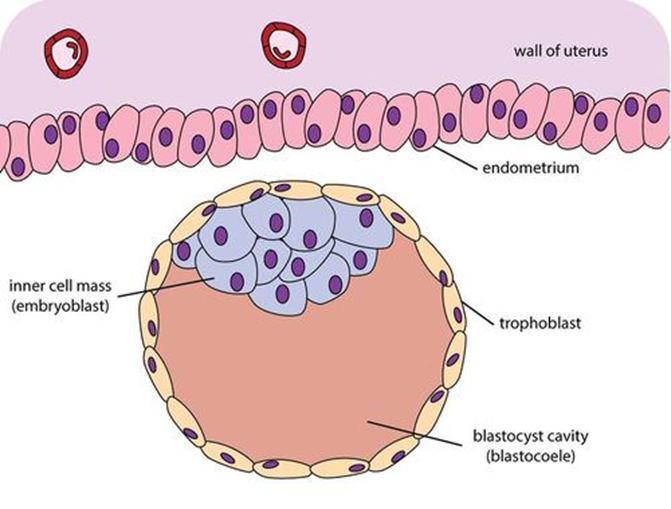Q: How are the embryos graded?
A: Embryo grading is a procedure that assesses the quality of each embryo that you have. It’s important to know which embryos you have are of high quality and which are of low quality. This is because low-quality embryos have a low chance of successfully implanting onto your surrogate’s uterine lining.
Embryos are graded when they are about 5 or 6 days old. At this point, the embryos are called “blastocysts” and each embryo has about 200 to 300 cells organized into 2 parts: inner cell mass (ICM) and trophectoderm. Inner cell mass is the group of cells located on one side of the embryo, and they will develop into the fetus. They have all the precursors to becoming the tissues and organs of the body. Trophectoderm is the outer layer of cells that will form the placenta, which supports the embryo by taking in nutrients from the mother, getting rid of wastes, and exchanging gases such as oxygen and carbon dioxide with the mother’s blood. The blastocyst also has a cavity called blastocoel. An embryologist will look at the development of these 3 parts to assign a grade to an embryo.

1) The degree of expansion
The embryologist will look at how well the blastocoel (the cavity) has expanded and whether it has escaped from the shell. Then, he or she will assign a number from 1 to 6, with 5 or 6 being excellent. The scores are:
- 1: Early blastocyst (blastocoel less than half the volume of the embryo).
- 2: Blastocyst (blastocoel half or more of the volume of the embryo).
- 3: Full blastocyst (blastocoel completely fills the embryo).
- 4: Expanded blastocyst (blastocoel larger than the embryo, thinning zona).
- 5: Hatching blastocyst (blastocoel hatching out of the shell).
- 6: Hatched blastocyst (blastocoel completely escaped from the shell).
2) Inner cell mass (ICM) quality
An embryologist will look at how tightly packed the inner cell mass is, and assign a letter grade of either A, B, or C. The letter grade A is the best, and the letter grade C is the worst. The criteria for scoring are:
- A: The cells are tightly packed and well-defined.
- B: The cells are somewhat loosely packed or less defined.
- C: There are only few cells or disorganized ICM.
3) Trophectoderm quality
An embryologist looks at how tightly packed and organized the trophectoderm is and a letter grade of A, B, or C is assigned. A is the best and C is the worst. The criteria for scoring are:
- A: There are many tightly packed cells.
- B: The cells are loosely organized together.
- C: There are only few cells or the layer is poorly formed.
Together, you’ll have a embryo grade that looks like “6AB” or “4BB” consisting of the 3 scores in order as above. A study by Zhao, Yu and Zhang shows that poor-grade embryos have lower clinical pregnancy rates and live birth rates than excellent-quality embryos. See the chart, below:

As you can see, there is a large difference in pregnancy rates from using an excellent-quality embryo than from using a poor-quality embryo. So, usually, intended parents choose to transfer the best embryos first while the poor-grade embryos are discarded.
Do you have any questions? Ask me and have your question and the answer featured on this website.

